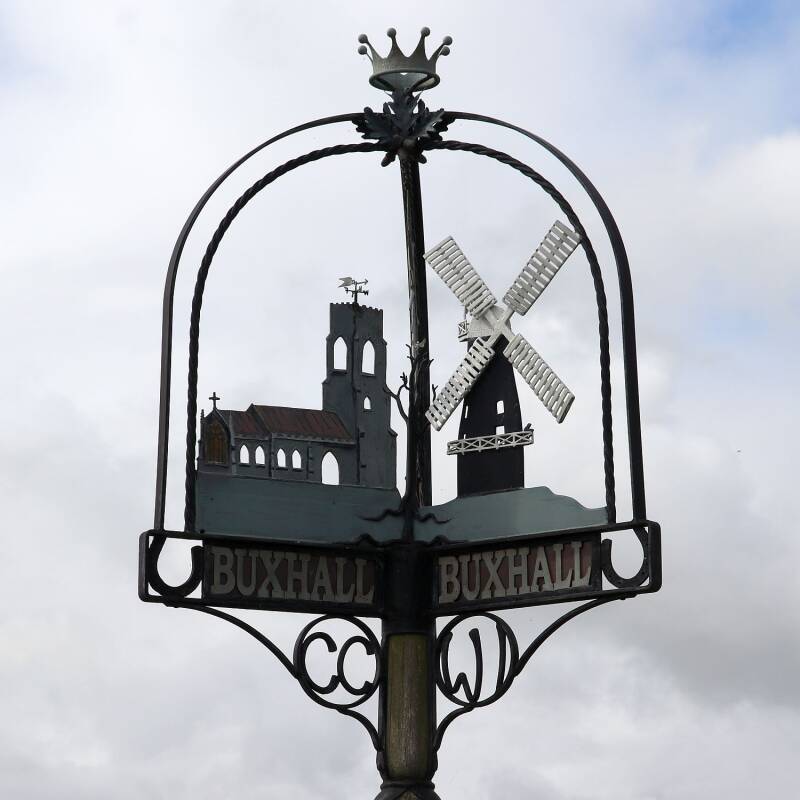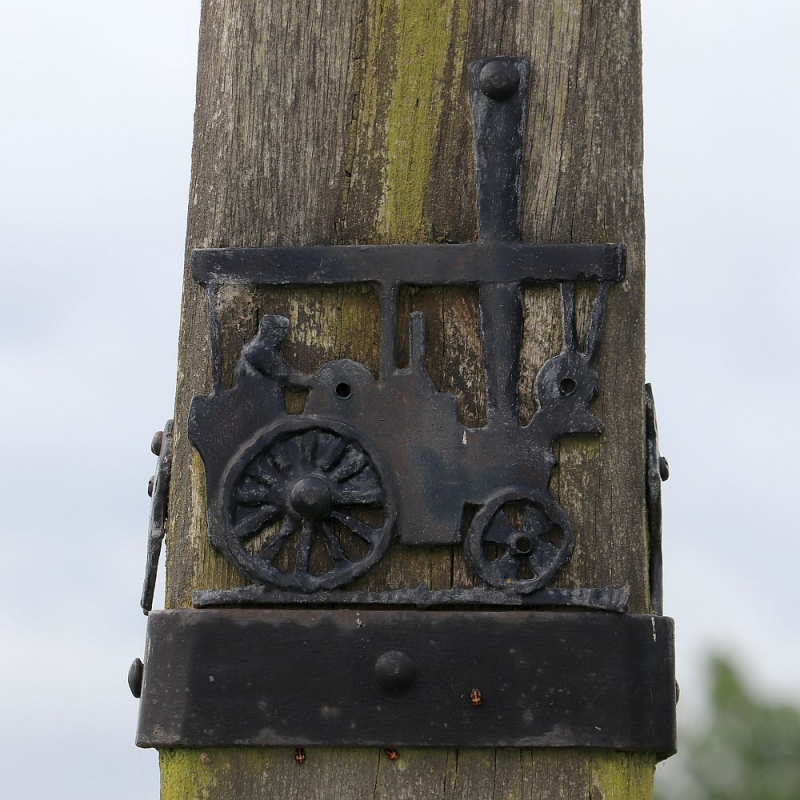Buxhall
The Sign
The sign was erected in 1998 and made by Graham Chaplin of Ironoak Forge of painted wrought iron. It is quite unusual as it is a triangular bell shape. From the three photos at the top, there are five main themes with added detail to be seen in the pictures below. In the first photograph the church of St Andrew's Great Finborough can be seen in the distance.
- Buxhall Mill, which still exists today without its sails, which were lost in a gale in 1929
- 14th century St Mary's church
- A farmer with a horse drawn cart full of sacks
- The sun overlooking the scene, which rises early on the east coast
- Less obvious is a dead old tree
The Detail around the Post
The Detail below the sign
The Detail in the sign
The Name and Population
Called Bucyshealae in 1000-2 and Buckeshala in 1086. The name means "The nook of land or hollow of the buck (male deer or goat)" from Old English. However Bucc may be a personal name. The population was 475 at the 2011 census.
Other Points of Interest
At the beginning of the 20th century Buxhall was virtually self sufficient with an agricultural economy. It enjoyed the facilities of a lending library, post office, windmill, blacksmith’s forge, shops, school, church, chapel, horse drawn fire engine and the Crown Public House.


















